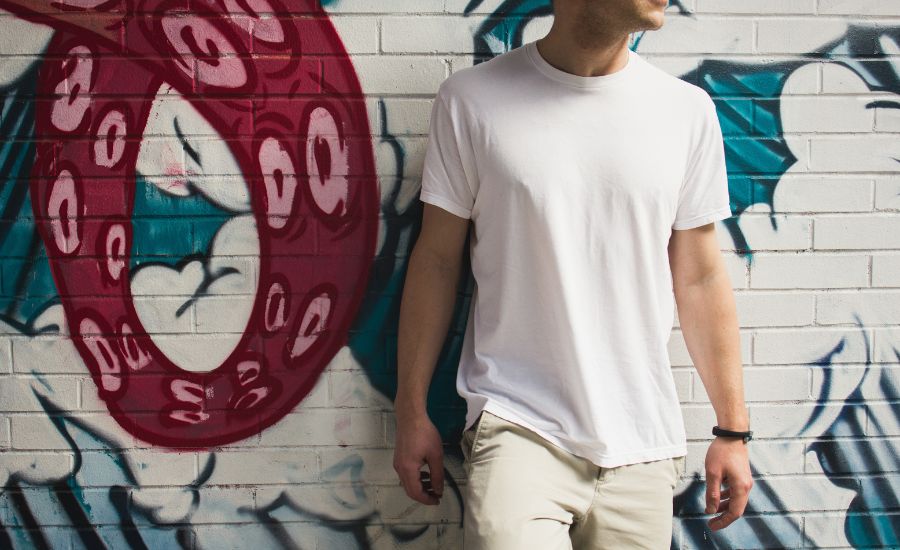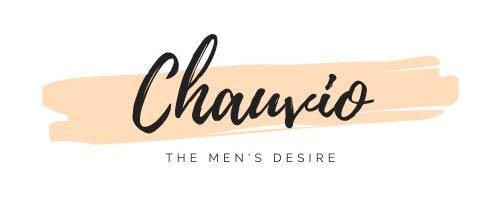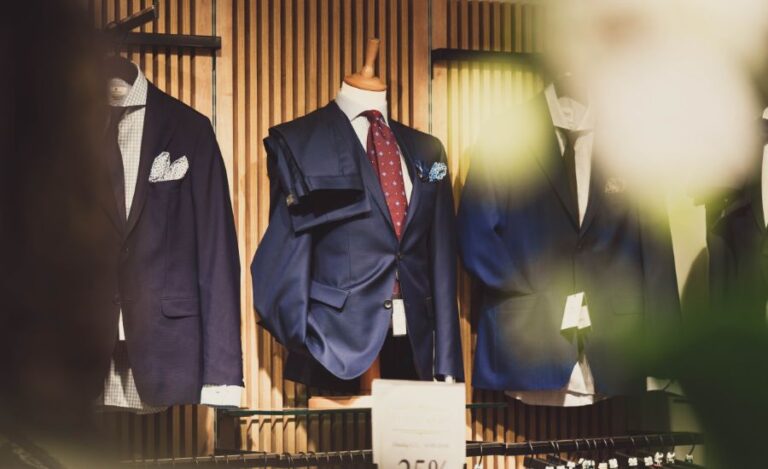What Is The Difference Between Cloth And Garment?
Have you ever wondered about the stuff we wear every day, like our favourite T-shirts or cozy pyjamas? Clothing is pretty important in our lives, right?
Well, when I think about clothing, there are two words that pop up a lot: “cloth” and “garment.” Now, here’s the fun part: What’s the real difference between these two?
Let’s dig into it together! We’re going to find out what sets clothes and garments apart, and it’s going to be interesting, I promise. So, join me as we unravel the mystery of cloth and garment.
What Is Cloth? – An Overview

Cloth is the basic material from which clothing is crafted. It encompasses a variety of textiles such as cotton, silk, wool, or synthetic fabrics, typically presented in sheets or rolls.
Cloth, in essence, serves as the starting point for creating clothes. It is the unrefined substance that undergoes a transformation into wearable garments.
Types of Materials: Cloth can be made from various materials, such as cotton, silk, wool, and polyester. Each material has its own feel, thickness, and characteristics.
Weaving vs. Knitting: Cloth can be created through two main methods. Woven cloth is made by weaving threads or yarns together in a crisscross pattern, resulting in a sturdy and structured fabric. Knitted cloth, on the other hand, is made by interlocking loops of yarn, making it more flexible and stretchy.
Presentation: Cloth usually comes in rolls or bolts and is sold by the yard or meter. It’s the material used to create garments through cutting, sewing, and assembling.
What Is Garment?

A garment is the end product of this transformation process. It represents the finished article, designed, cut, sewn, and sometimes embellished for comfort, style, and functionality.
Garments are ready to wear, tailored to specific purposes or occasions, such as raincoats for staying dry in the rain or winter coats for warmth in cold weather.
Purpose and Role: Garments are designed to serve specific functions. They keep you warm in winter, protect you from the rain, or help you express your personal style.
Production Process: Garments go through several steps before they become wearable items. First, they are designed. Then, patterns are made to cut the cloth into specific shapes. Finally, these pieces are sewn together, and you have a fully functional garment.
Variety: Garments come in countless styles and forms. From T-shirts and jeans to elegant dresses, suits, and cozy coats, each garment is designed for a particular purpose and style.
4 Key Differences Between Cloth And Garment
Nature and Form
Cloth is essentially the raw material from which garments are crafted. It is typically found in the form of rolls, bolts, or sheets. Cloth, in its basic form, has not yet been cut or tailored into any specific shape or design. It is a flat, flexible material. The role of cloth is to provide the fundamental fabric that serves as the foundation for creating clothing and various other textile products.
Whereas a garment is the end product of the clothing production process. It is what we wear as clothing in our daily lives. They are cut, sewn, and assembled into specific shapes and designs to fit the human body comfortably. garments are designed to fulfill specific functions, such as providing warmth, protection, or expressing personal style.
Purpose and Functionality
- Cloth:
- Foundation Material: Cloth primarily serves as the foundation material for making clothing. It provides the canvas upon which garments are created.
- Flexibility: Cloth’s role is versatile, as it can be used not only for garments but also for various textile products like curtains, bedsheets, and upholstery.
- Garment:
- Wearable Clothing: Garments are designed and manufactured to be worn by individuals. Their primary purpose is to be worn as clothing.
- Functionality: Each garment is crafted with a specific function in mind. For example, a raincoat is made to keep you dry in wet weather, while a wedding gown is designed for elegance on special occasions.
Production Process
- Cloth:
- Creation: Cloth is created through weaving or knitting threads or yarns together to form a sheet or roll of fabric.
- Characteristics: The production method (weaving or knitting) determines cloth’s texture, thickness, and material properties.
- Garment:
- Creation: Garments go through a series of steps that include designing, pattern-making, cutting cloth into specific shapes, and sewing these pieces together.
- Transformation: These steps transform the raw cloth into a wearable, functional item with a distinct design.
Variability and Types
- Cloth:
- Material Diversity: Different types of cloth are available based on the materials used, such as cotton, silk, wool, polyester, and more.
- Characteristics: Each type of cloth has its unique properties, which influence factors like breathability, durability, and comfort.
- Garment:
- Style and Design: Garments come in a vast array of styles, designs, and forms. They cater to different needs, occasions, and fashion preferences.
- Specialization: Garments can be highly specialized, with designs tailored for specific activities or functions, such as sportswear or formal attire.
What kind Of Cloth is Used In Fast Fashion?
Fast fashion typically involves the use of inexpensive and readily available materials to produce clothing quickly and affordably. Here are some common types of cloth used in fast fashion:
- Polyester
- Rayon
- Cotton Blends
- Knit Fabrics
- Viscose
- Polyurethane (PU) Leather
- Denim
- Nylon
Fast fashion brands prioritize affordability and quick turnover, so they often opt for materials that are cost-effective and easy to work with, even if they may not be as durable or sustainable as natural fibers.
Is A Dress Considered As Garment?
Yes, a dress is indeed considered a garment. A dress is a specific type of clothing item that is designed to be worn by individuals. It typically consists of a one-piece or two-piece outfit that covers the upper body (top) and lower body (skirt) in a single, continuous garment.
What Types Of Garments Comes Under Comfy Clothing?
- T-shirts: Soft and easy to wear, perfect for lounging.
- Sweatpants: Loose-fitting pants made for comfort.
- Hoodies: Warm, cozy tops with hoods for a relaxed feel.
- Pajamas: Sleepwear for a comfy night’s rest.
- Sweatshirts: Like hoodies but without the hood, great for staying warm.
- Leggings: Stretchy and comfy for both relaxing and exercise.
- Athletic wear: Sporty clothes like yoga pants and sports bras.
- Slippers: Comfortable footwear for indoors.
- Robes: Cozy, loose-fitting clothing for lounging or after a shower.
- Cotton dresses: Light and airy dresses for a comfy style.
Conclusion
The main difference between cloth and garment lies in their stages of development and purpose. Cloth is the raw material, the fabric that comes in rolls or bolts, while a garment is the finished product that you wear.
Understanding this difference helps us appreciate the craftsmanship that goes into creating the clothes we use every day and the role that both cloth and garment play in our lives.
So, the next time you put on your favourite shirt or dress, you’ll know that it started as a piece of cloth before being transformed into a stylish and functional garment.





